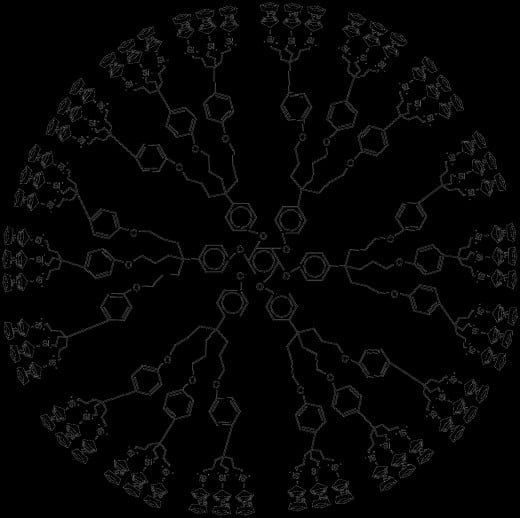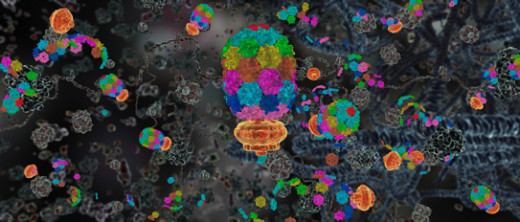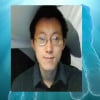Aging Research: The Journey to Immortality
Short History of the Search for Immortality
For Millennia, the Ancient Chinese Emperors sought to uncover the elixir of life which resulted in their deaths due to the poisonous concoctions. It was believed that extremely stable substances like Jade and Gold could extend the lifespan of anyone who consumed them. Many of these substances were lethal and Emperor Jiaking in the Ming Dynasty died from such poisoning. The prospect of ruling for all eternity was attractive and the goal of eternal youth was not so different anywhere else in the world. European sailors researched the seas for the mythical "fountain of youth" but were only met with misfortune. Indeed, the promise of infinite lifespan was tempting and such a creature would be the ultimate product of natural selection, if one were to exist.
Aubrey de Grey - Aging
Aging - What does aging really mean?
Aging is such a loosely used term but if you ask "what is aging" you'll get a response that has to do with "it is natural" or "it is inevitable" - or some other shallow ignorant answer.
Actually, aging is simply the Accumulation of Damage of Time
Dendrimer

What is Aging?
Aging was a mysterious and all encompassing force of nature. In the past few decades since the coining of the term gerontology in 1903 by a Russian biologist Elie Metchnikoff, our understanding of the biological processes underlying aging has increased exponentially. Aging is defined as a universal phenomena that affects all walks of life and inorganic matter. From a universal perspective, entropy and random chemical reactions underlie the process of aging (Dolie, 2000). On a biological scale, aging is defined as the accumulation of harmful changes in the body over time. Aging can be defined broadly in terms of entropy or time and it can be defined specifically down to misregulation of tiny biological switches that regulate the control of hormones and other chemicals in our body or even further down to the atomic level of free radicals involved in the oxidation of membrane lipids and DNA. Indeed, aging is a field condensing many disciplines of science.
Aging in a Nutshell
From Magic to Mechanism
Why is it that when we get old, our skin sags, we become less agile, our memories fade, and we become weaker and weaker until we become too crippled to move? That is the golden question in age research. While the knowledge on how to reverse aging is still young, why we age has been a subject of research for over a century.
In 1882, German biologist August Weismann deduced his wear and tear theory of aging (ProlongYouth n.d.). Aside from being the most intuitive, it also provided a perspective that fights the mystical perspective of aging and gave the phenomena of aging a concrete foothold. According to Weismann, the building structures of our biology age because it is subjected to the torrential pelting of high energy radiation and with the consistent torment of work, the body eventually wears away like glass on a spinning grind stone. Weismann shows that aging is a phenomenon of nature and because aging is entirely natural the next step is to ask, why does aging happen at all and how does the fathering mechanism of all life, Darwinian natural selection, determine the lifespan of its creations? Is aging inevitable and programmed by nature or is it because of something else? In 1889, August Weismann tried to answer this question by formulating another theory of aging in terms of Darwinian evolution called the Programmed Death (programmed aging) theory. The idea is that an organism must die in order for there to be enough space for the next generation. An ecosystem that has maximized its carrying capacity would begin a rapid decline to dead. Weismann's theory sounded plausible except that evidence to support it was sparse and future evidence only provided contradiction. Nevertheless, his theory became a steppingstone for a more rational theory that has surfaced in the past few decades called the Evolutionary Neglect theory. In addition, before Weismann died, he disowned his theory. This was as far as aging research could get without the aid of advanced microscopy, spectroscopy, micro-arrays, and other modern technology.
Cellular Damage
With the growing technology of the 1900's, scientists were able to study aging in greater detail. Cell biology and biochemistry took the battle against aging to the source - the intricate molecular machinery of life. In 1942 Johan Bjorksten observed the loss of elasticity in skin, the decline of the immune system, and the emergence of diseases such as sclerosis. He saw a commonality that contributed to the functional decline of these components of the body. That was the formation of chemical cross-links, which cause the stiffening of tissue all over the body from joints to arteries and muscles. Collagen, the protein in skin, tendons, and joints is meant to be flexible and the same concept applies to blood vessel walls. However, cross linking of collagen protein molecules causes an increase in rigidity much like dried out chewing gum between the pages of a book. As a result, the heart pumps less blood, mobility becomes degraded, and the immune system becomes weakened. Crosslink formation also allows cellular garbage to accumulate around the cross linking iron bars of molecular machinery, making the highly stable structures even more rigid. Similarly, a car cannot function if its components are all rusted. The study of aging by this time had a perspective that is already highly mechanical and most importantly, concrete. Aging is the degradation of biological structures rather than a punishment by God even though that is a perspective that still lingers today. Science traveled deeper and deeper beyond the limits of vision until it researched atomic and molecular scales of DNA.
Genetic Damage
DNA is the blueprint of all proteins in the body. These blue prints are subject to random mutations that may distort the shape of important proteins. This is the Error Accumulation theory formulated by Peter Medawar in 1952 ("Longevity.Ca", n.d). This theory contradicts Weismann's Programmed Death theory of aging. The premise of Medwar’s theory is that aging is the result of evolutionary neglect in which gene expression is highly controlled up until right after the reproduction years of approximately 30- 40 years of age. After reproduction, selection factors for preserving life decrease and biological machinery rapidly becomes misregulated. This correlates with the rapid rise of every type of disease after the age of 40 including susceptibility to infections, heart disease, Alzheimer's, and cancer. One of the causes of damage to DNA and other cell components was suggested by Harman in 1956, which became the famous Free Radical Theory of Aging ("Longevity.Ca", n.d). Harman theorized that aging is caused by free radicals like ROS (reactive oxygen species) that oxidizes and damages everything from the tiny strands of DNA to cells and even tissues and organs by randomly changing their three-dimensional structures and because structure determines function, a random change in the structure of proteins changes the catalytic ability of proteins. Another example is the conversion of cis-hydrophobic tails of phospholipids to trans which reduces the fluidity of cell membranes that is essential for cell communication, intracellular, and extracellular transport of molecules. Free radicals also cause DNA mutations such as deletions, additions, and substitutions that disrupt the function of product proteins. After all, aging is simply the accumulation of damage that results in the loss of function of an organism. Harman's free radical theory of aging is widely misused by the media and the public. The promotion of antioxidants is simply and utterly hype and studies have shown that it has absolutely no effect on the lifespan of “long lived” organisms such as humans and chimpanzees. Antioxidants such as Vitamin C enhance function due to its involvement in the production of the structural protein Collagen and not for its antioxidant function. So why do the companies continue to misinform the public? Money is the simplest answer and their greed has created a huge skeptical following against real aging research by advertising scientific studies out of context. Antioxidants increase the lifespan of simpler organisms like mice but the results rarely translate to humans because of differences in the biochemical network. Nevertheless, the measurement of oxidation is a useful experimental method in estimating the effectiveness of aging therapies in animal studies which may include changes in lifestyle, drugs, and stem cell therapy among many others. Aging has risen from mysticism into the realm of science, but it also carries with it some popularized and economically marketable misconceptions.
The complex universe of our biochemistry

Aging Misconceptions
Among the currently named theories of aging that became the stepping stones in the journey to immortality, there are the recent advances and in 1961 Leonard Hayflick discovered that cultured cells have only a limited number of divisions before it stops dividing. This limit became known as the Hayflick limit, a finite number of divisions before a cell reaches senescence, a state much like the sleep function of laptops. In 2010, a group of Harvard colleagues experimented with the hayflick limit on mice and engineered transgenic mice that lacked telomerase (Blain, 2010). To their surprise, when telomerase was given to the telomere lacking mice, the mice became healthy again. Scientists like Aubrey de Grey argue that such a phenomena is not an example of reversed aging because telomere lengths never shorten to the point of contributing to aging in nontransgenic organisms. Indeed, since then, the Telomere theory of aging has spread like a virus and everyone assumed that if telomere shortening is stopped, immortality is ensured which is not the case. Numerous studies since the year 2000 have clearly shown that the shortening of telomeres is a protective mechanism against cancer (Seimiya, 2002). The cell with short telomeres is then replaced by a new healthy cell. In fact 95% of cancers are the result of telomerase protein expression. Once again, since the free radical theory, the public unknowingly contributes to the misconceptions about aging.
The Future of Life Extension
Aging research has come a long way. Since the human genome project and the invention of bioinformatics, new ways of analyzing the accumulation of deleterious changes in the body has been invented. As previously discovered, aging is system wide, but scientists did not have the tools to analyze changes of protein expression in bulk at different stages of life. With the rise of new tools like DNA micro-arrays, changes in protein expression can be depicted as a pattern of dots and one common theme is that the pattern of dots certainly becomes more and more random over time which confirms the Misregulation Theory of Aging. Bioinformatics gave rise to the Network Theory of aging which finally ended the search for a single cause of aging and pushed aging research into searching for patterns on the biochemical level (Kirkwood, 1997).
Aging research is now being explored from seemingly unrelated fields that offer new perspectives. A convincing perspective of aging is the Engineer's perspective of aging popularized by Aubrey de grey in his 2007 book, Ending Aging which explains aging in an extremely simplified manner. De Grey offers an analogy that compares the biochemical aging researchers to the engineering aging researchers: it is like trying to understand a computer program in terms of binary (0's and 1's) as compared to a higher level programming language such as Java and C++. Aubrey de grey has outlined 7 forms of aging damage in organisms:
- Intracellular Junk Accumulation
- Extracellular Junk Accumulation
- Tissue stiffening due to crosslink formation
- Accumulation of Harmful Cells (cells in senescence)
- Cell loss
- Mitochondrial Mutations
- Nuclear Mutations
Aubrey de Grey's goal of reversing aging is to focus on the causes of age-related diseases. Aubrey de Grey suggests that if the 7 categories of damage are eliminated, all age-related diseases will be also eliminated, and thus the problem of aging will be solved. In essence, if one were to cure cancer, what would one die from? Possibly Alzheimer's. If Alzheimer's were to be cured, what would one die from? Possibly heart disease and going one by one and defeating all the diseases, one would be left without the causes of age-related diseases and would thus remain healthy.
Conclusion
The journey to immortality is the culmination of thousands of dedicated scientists: biologists, chemists, engineers, physicists, computer scientists, geneticists and more. Understanding aging started as the simple wear and tear theory which then became more complex as technology improved, resulting in the invention of techniques to analyze the micro-universe. DNA, protein, and small inorganic molecules then became the subject of research, followed by vastly improved methods of analyzing data through the invention of bioinformatics. Soon aging research was joined by fields seemingly unrelated, such as artificial intelligence and engineering and while the journey to immortality is still underway, progress is being made at an increasing rate to a final solution that can save us all from impending death.
Summary
1. Aging is not mystical - It is a natural phenomena.
2. Aging is a category of age-related diseases (cancer, alzheimer's, atherosclerosis, etc)
3. Aging can be reversed because it is directly related to age-related diseases
4. New technologies have been invented to understand the aging process
5. Aging is the accumulation of damage on every scale: biochemical scale, cellular scale, and ultimately affects the function of organs
Please Support Aging Research



